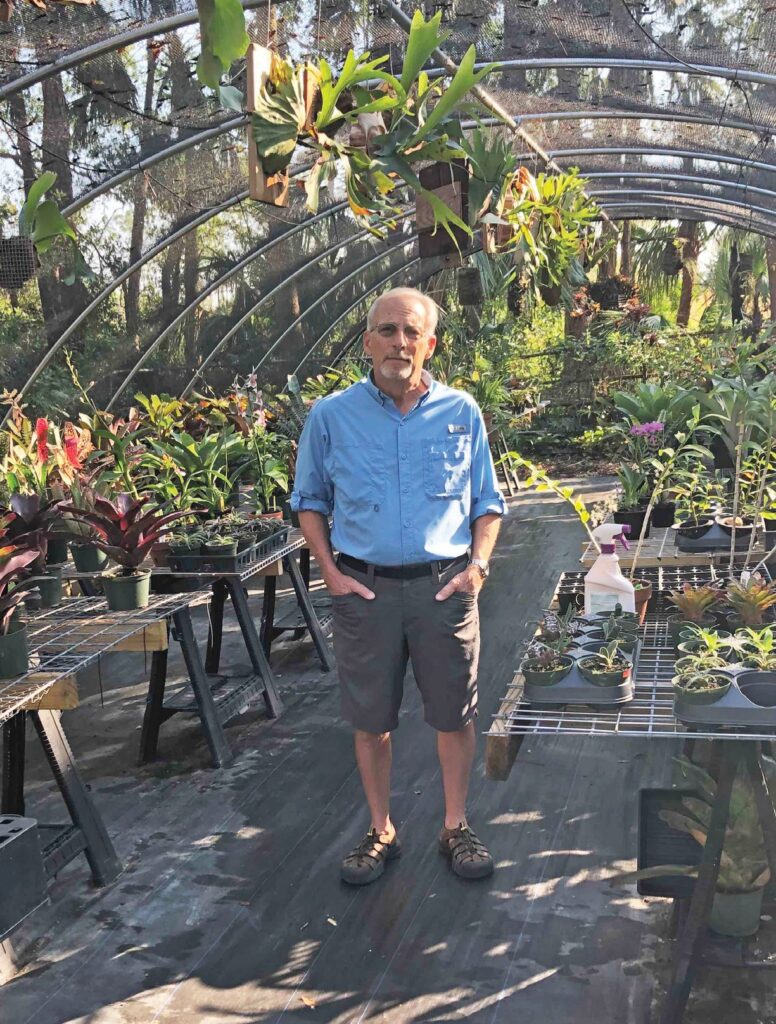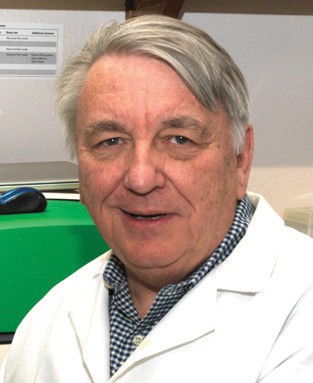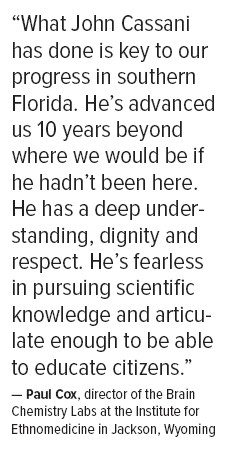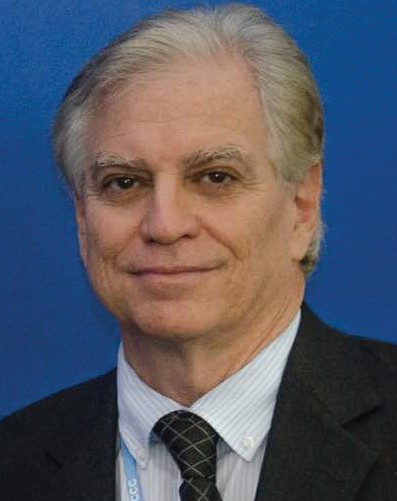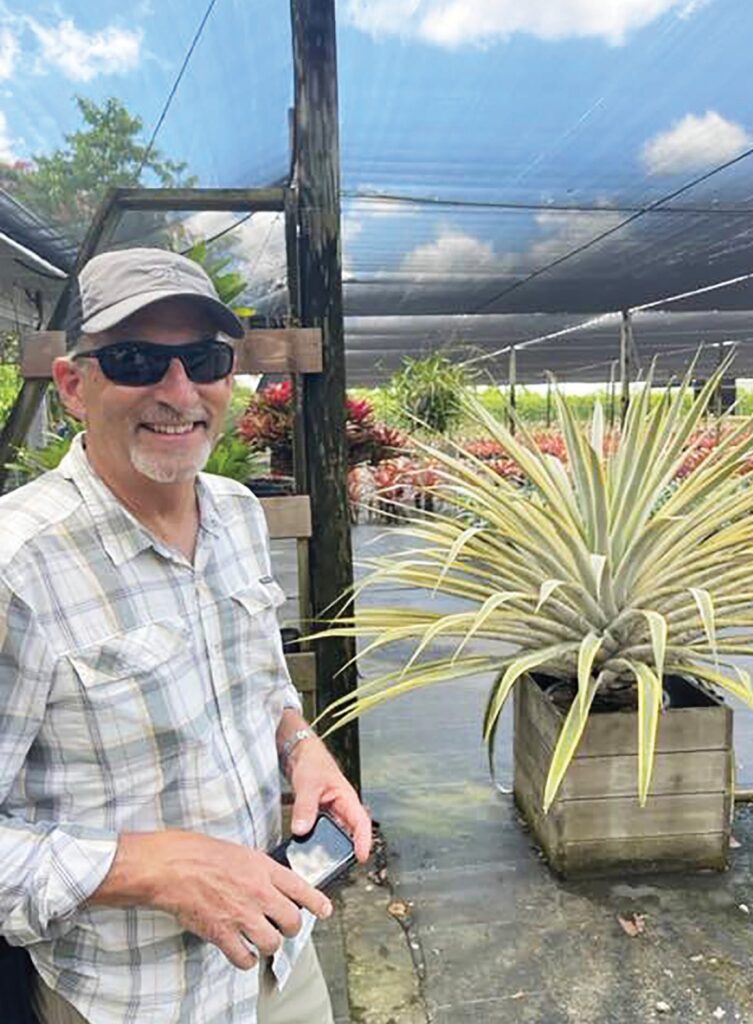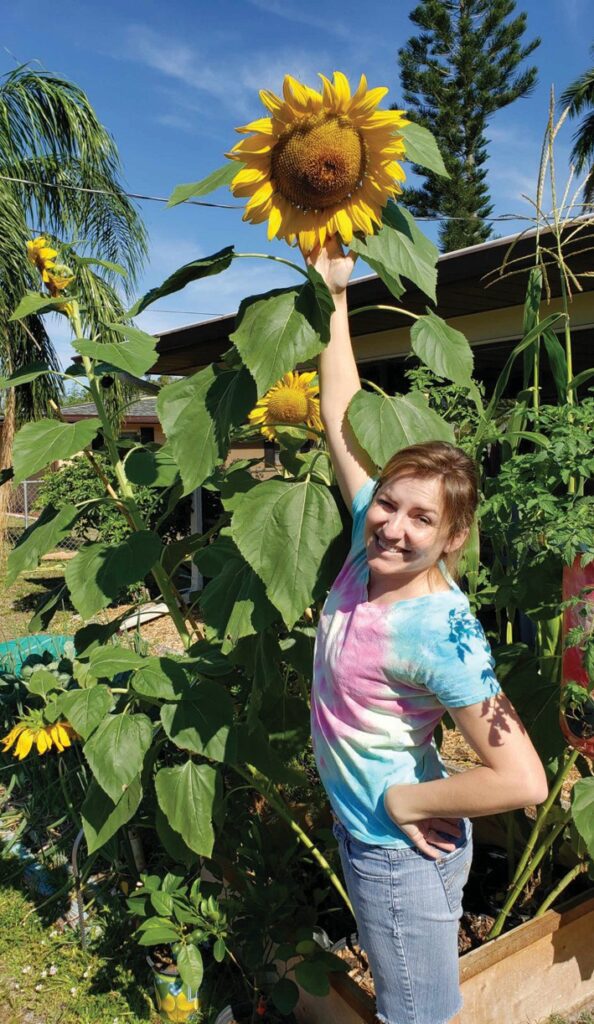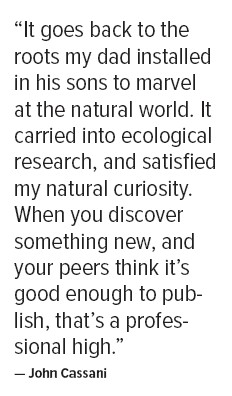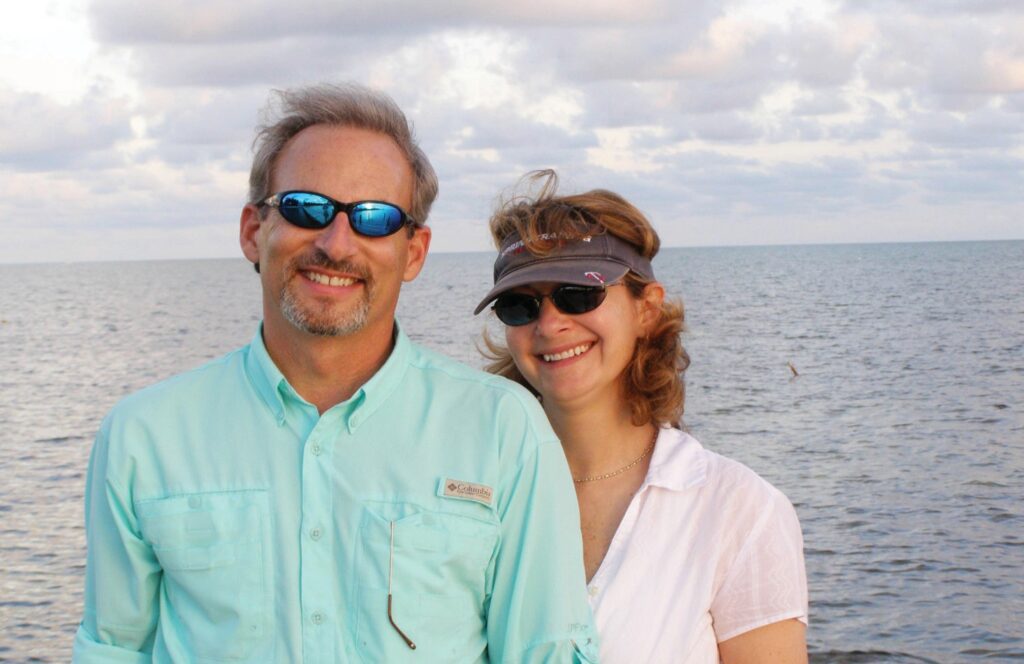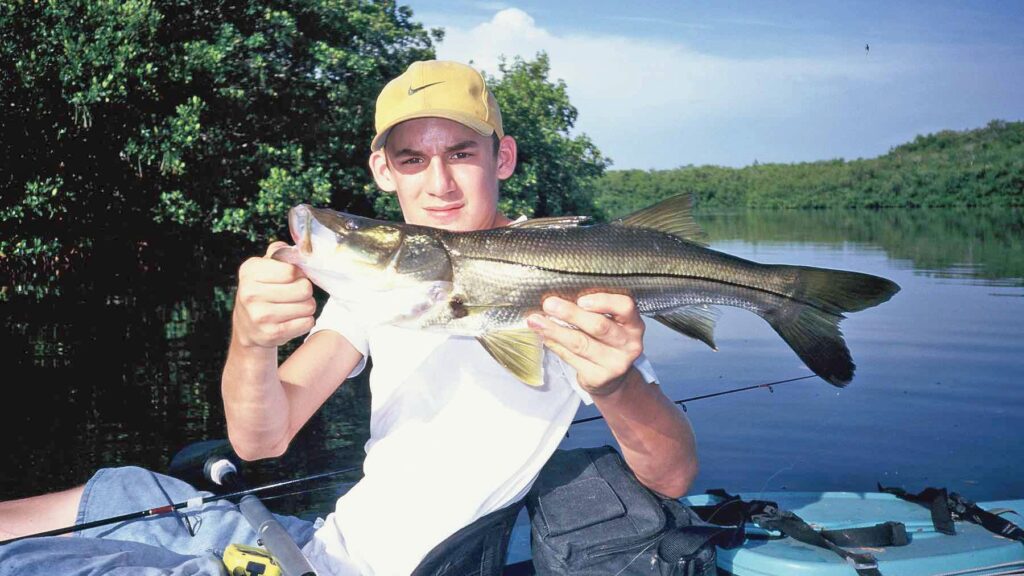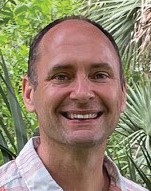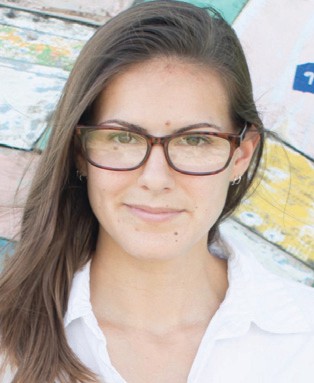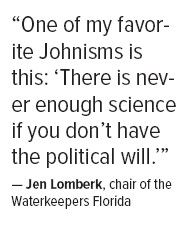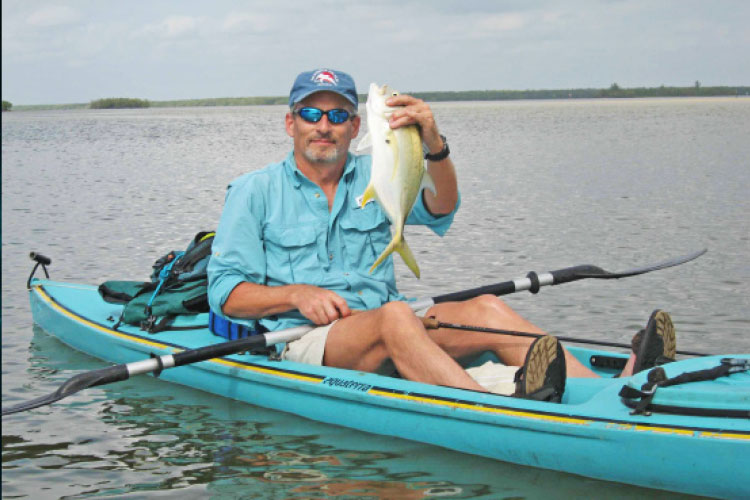

When he crossed the finish line that day, unlike 5,000 other runners who quit, John Cassanihen he crossed the finish line that day, unlike 5,000 other runners who quit, John Cassani had completed his sixth of seven Boston Marathons, noteworthy in itself.
But he did it on an April morning when temperatures reached a historic 89 degrees. When runners were warned not to run. When he’d hit not just “the wall” often faced by exhausted marathoners, but the age of 60.
That takes disciplined preparation and plain grit.
“One of his key attributes, along with intelligence, is perseverance,” explains Steve Brookman, a close friend who ran the same race.
“He just never quits.”
Now after more than six years he has finished another marathon of sorts, this time at the age of 70: his high-profile position as the first Calusa Waterkeeper.
Cassani shaped and defined the job at a critical moment in Florida time, creating an outsized role for a private citizen in a nonprofit agency aimed at protecting and saving the water from the demands of roughly a million people, and sometimes protecting those people from the water.
Starting in 2010, Florida’s then governor, now U.S. Sen. Rick Scott, had cut the state’s environmental regulators roughly in half, laying off hundreds of Department of Environmental Protection employees and others who could have been doing that job.
Government was bloated and its regulations were choking off business and growth, the governor had claimed, especially as Floridians emerged from a recession. The Legislature went along with him.
So Cassani stepped in.
“I thought I could help,” he says modestly, a man temperamentally incapable of singing his own praises.
“Calusa Waterkeeper” is not just his title. It’s also the name of an independent, nonprofit organization, a member of the international Waterkeeper Alliance of 350 organizations including 15 in the Sunshine State devoted solely to protecting, preserving and restoring water systems that make Florida unique. Those systems are now under siege.
“John is really an extraordinary person because he rapidly comprehends the science” — the biological mechanisms of a huge water system that once formed the western Everglades. “But to also translate that into an innovative approach to public policy is extremely rare,” says Paul Cox, director of the Brain Chemistry Labs at the Institute for Ethnomedicine in Jackson, Wyoming.
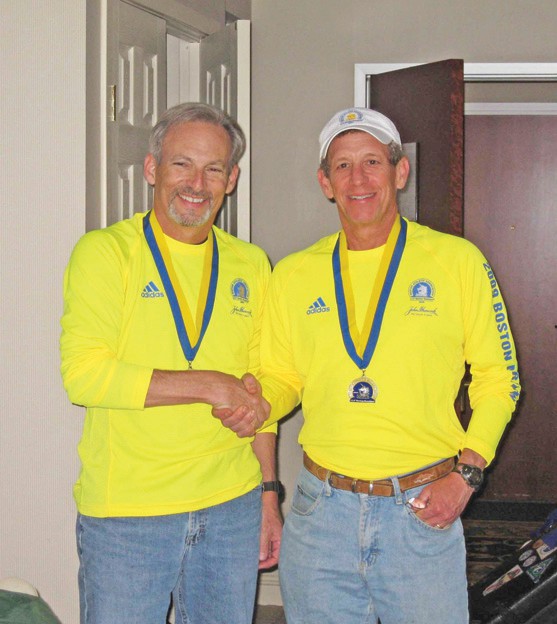
LEFT: John Cassani and Steve Brookman following their completion of the 2009 Boston Marathon, one of six for Cassani.
Internationa l ly accomplished, with a doctorate in biology from Harvard University — a former Fulbright scholar, winner of the Goldman Environmental Prize among others, a book author, fellow and research scholar at universities in America, Europe and India — Cox is now studying neurodegenerative illness in search of new therapies for ALS (Lou Gehrig’s disease) and Alzheimer’s.
That, in part, is how he came to spend time in Florida working with Cassani, and understanding why nutrient swollen Florida water could endanger both flora and fauna, including humans.
As he and his colleagues have shown, a demonstrable link exists between cyanobacteria in water and air, and neurological diseases including Alzheimer’s, ALS and Parkinson’s.
“What John Cassani has done is key to our progress in southern Florida,” Cox explains. “He’s advanced us 10 years beyond where we would be if he hadn’t been here. He has a deep understanding, dignity and respect. He’s fearless in pursuing scientific knowledge and articulate enough to be able to educate citizens.”
Those citizens come from every background and all political persuasions, it seems.
“John realizes better than most people that it’s a bipartisan issue. He sees human health and water impacts on human health as being bi-partisan. He has never succumbed, to my knowledge, to the temptation of politicizing.”
Instead, he takes all comers to the cause.
“He has led and mentored a grass roots effort of physicians and scientists and fishing captains and water enthusiasts and residents, and tried to come up with mutually acceptable solutions. I personally think John has set a model for approaching and solving these issues that will resonate to the Great Lakes and (elsewhere in the country), to (Europe) and even to China.”
Cox is familiar with all those places and their responses to challenges such as toxic algal blooms.
He offers one other observation, echoing Cassani’s own many year conviction: “The only way we’ll get solutions is to have everybody realize: We’re in this together.”
Origin of the problem
Cassani’s longtime friend and clean water advocate John Capece, now the Kissimmee Waterkeeper who holds a doctorate from the University of Florida in agricultural engineering, talked Cassani into the role. They’d met when both attended a “River At Risk” event sponsored by the region’s daily newspaper,
The News-Press, late in 1994.
With others, they’d long recognized the threat to Lake Okeechobee and both the Caloosahatchee River on the west, and the St. Lucie on the east.
The Army Corps of Engineers straightened and refit those rivers like plumbing pipes in the 1960s, periodically emptying lake water down them to protect the dike. The water was heavily polluted by two significant sources: Nutrients from cow manure washed in from the Kissimmee River basin on the north; and backflow from sugar cane fields flanking Lake Okeechobee on the south.
The 67-mile Caloosahatchee basin — increasingly swollen by lake, tributary and stormwater runoff from farms, septic systems, clustered sprawl, and rapidly growing municipalities — was about to be overused and overwhelmed, Cassani recognized.
In the mid-1990s, the basin included about 400,000 residents. Now almost 850,000 live there permanently, their numbers swollen by annual visitors. By 2045, the permanent number likely will reach 1.1 million, demographers say.
Seeing it coming, Cassani began to articulate his positions on water degradation and how to stop it in letters to offi- cials, consistently and for years.
“Taken together, the letters he wrote to regional, state and national officials on water issues serve as a history book for how watershed issues evolved in our region,” Capece notes.
“Thanks to Cassani, nobody in the future will ever be able to claim that the government did not know what it was doing as it allowed our regional water resources to steadily decline between 1995 and today.”
As a result, when Capece and some colleagues formed the Calusa Waterkeeper organization in 2015, “I knew that nobody could fill the role as well as Cassani. He had the academic knowledge, the decades of experience as a regional biologist working (in the field), and the experience with a wide range of regional advocacy groups,” Capece explains.
Lured by the big bucks
Cassani took up the Calusa Waterkeeper challenge following a 35-year career as an ecologist working a three-county region along the southwest coast to control hyacinth, hydrilla and other fauna with biological tools rather that herbicides. In that role and with two degrees from universities in his home state, a B.S. in fisheries and wildlife from Michigan State University and an M.S. in biology and aquatic ecology from Central Michigan University, he invented a tool and method that became an industry standard in producing sterile grass carp with big appetites.
These so-called triploid fish — three sets of chromosomes introduced in the eggs rather than two — eat plants that could overwhelm a waterway. But they don’t reproduce, an essential factor in such a strategy.
The hyacinth grew so thickly once upon a time that it sealed off a surface stretch of Caloosahatchee River from bank to bank. When a Life Magazine photographer captured the scene and used it as a cover photo in 1961, Life effectively jump-started an effort to inhibit those out-of-control water plants with a taxpayer-funded budget for Hyacinth control, Cassani says.
That long-ago event had far-reaching, benevolent consequences for Floridians, especially when Cassani arrived in 1978.
It was good for him, too. As a graduate student and teaching assistant, he’d been living on $400 a month. He drove a 1972 Chevy Nova sometimes known not to break down, he recalls, even when he was out doing 360s in the vehicle on ice.
But a personal foray up the wild Fisheating Creek with his future boss, along with the extravagant sum of $10,800 in annual salary, convinced him to head south, where his college girlfriend, also a biologist with graduate degrees from Central Michigan, joined him.
“I thought I was rich,” Cassani recalls.
Before long he’d proposed to her, and by 1984 he and his first wife, Mary Kay Cassani, owned a little house and brought their fraternal twins, Danny and Sarah, into the world.
The man who could do it all
He wasn’t just working the full-time job in those days, managing waterways in three counties for Hyacinth Control, and raising children. He did a few other things, too.
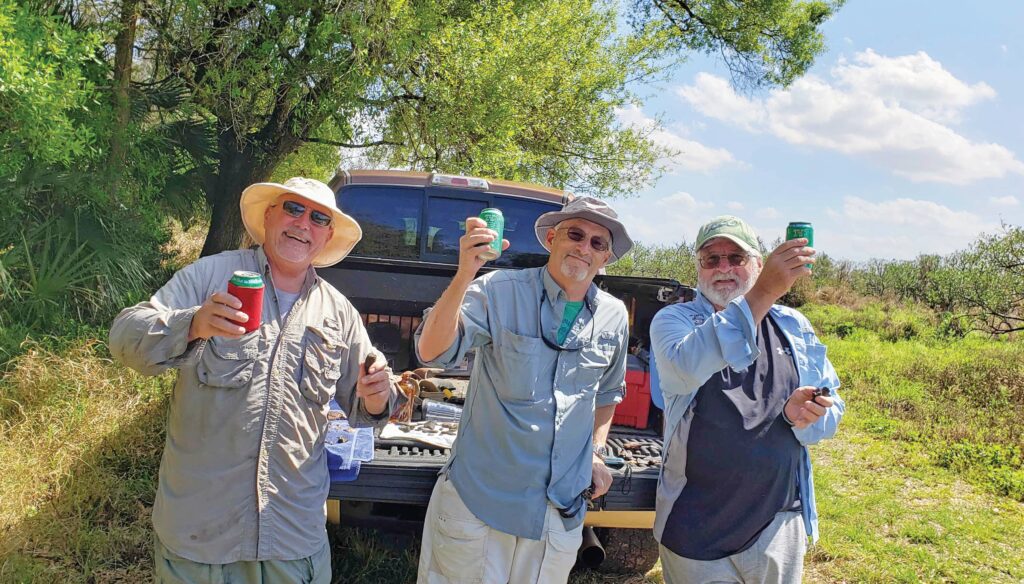
Rick Joyce, John Cassani and Win Everham (left to right), following a morning fossiling at “Jurassic Creek.”
A list of accomplishments through the years includes overseeing the Lee County 20/20 program to purchase and protect still wild or pristine lands for a time, putting them off limits to development; advising county commissioners on the comprehensive plan; founding the Lee County Pond Watch Program; founding the Southwest Florida Watershed Council; founding Frog Watch, aka the Southwest Florida Amphibian Monitoring Network; founding the Estero Bay Nutrient Management Partnership; and founding the Southwest Florida Aquatic Nuisance Species Surveillance and Education Network, among others.
He also was a member of many organizations, at one point becoming a professional entomologist certified by the Entomological Society of America, all while teaching at Florida Gulf Coast University and helping to develop the first FGCU Biodiversity Conference, in 2017.
In addition, “His research work has been published in over 40 scientific publications and reports, including six concerning Harmful Algal Blooms,” according to his resume.
That in itself is extraordinary for a nonacademic field scientist.
Win Everham, a professor of Ecology at FGCU and longtime friend, describes Cassani’s work to further knowledge by publishing from outside academia as unprecedented, in his experience.
“It took me a long time before I realized the back story about the really good science he did — for example, introducing the sterile grass carp and the solid research done there.”
Cassani designed a stainless steel cylinder housing a brass piston topped by a pressure gauge using hydrostatic pressure rather than heat to make the triploid fish. It relied on an expensive piece of lab equipment known as a flow cytometer that could process tens-of-thousands of fish cells per second. He produced sterile grass carp in sufficient quantities to stock the region’s fresh waterways and get the hyacinth problem safely and cleanly under control.
The technology and application were so effective Cassani was dispatched to California to help a university (UC Davis) establish a similar program there, and to Alberta, Canada, to do the same thing.
“In academia, the coin of the realm is how many papers you published,” Everham notes. “You don’t often — you never — see somebody as productive as John in that kind of nonacademic position. John has always been able to produce 25 hours of productivity out of any 24-hour day. I have colleagues who talk about what they’ve published, but you never hear that from John.
“He’s there, he’s quiet, and then he speaks truth. And you shut the F up and listen, when John starts talking.”
One more thing, adds Everham: “He has a deeper gift than anybody I know to understand and take science, and then transfer it into public policy and political action.”
Cassani was having a blast doing all of it.
“They gave me a free hand (at Lee County Hyacinth Control) to do the kind of research I thought was relevant — applied research,” he says.
“It’s a little different than some basic (academic) research, where you’re doing work nobody has done. With applied research we take science and use it as a management tool outside the lab. Everything from chromosome counts to aquatic plant surveys. It was just a great time. And I love trying to understand how individual species fit into a community. I like the ecology part of it.”
A water and land ethic
That came from his upbringing, he acknowledges — from his parents in a close family of four boys.
“It goes back to the roots my dad installed in his sons to marvel at the natural world. It carried into ecological research, and satisfied my natural curiosity. When you discover something new, and your peers think it’s good enough to publish, that’s a professional high.”
His father and two uncles, all veterans of World War II, owned a neighborhood sporting goods store in Fort Wayne, Indiana, in the 1950s, Cassani remembers.
All of them loved sports, including fishing and hunting, part of Cassani’s youth.
A decorated Army medic who had served both in Africa and Europe, his father later became an industrial engineer, moving the family to Pontiac, Michigan. There, Cassani attended a Catholic high school and won a scholarship for distance running to a small liberal arts college, Aquinas, where he spent the first two years of his undergraduate education.
His father remains a deeply resonant note in the symphony of his life.
“I would give Dad credit for installing a water and land ethic into his children,” he explains.
It’s a phrase he mentions more than once in conversation: a water and land ethic.
“It really resonated with me. Almost every Sunday we could go somewhere and explore a lake or woods — dad would point out things like frogs, or a crayfish tunneling. We’d load up the family wagon and go fishing, mostly.”
The water and land ethic came with a considerable imperative never to take undue advantage when others didn’t have the same chance, and never to give up. It also carried a toughness and stoicism Cassani has inherited, according to his wife, Holly Schwartz, an environmental policy associate at the Sanibel-Captiva Conservation Foundation who previously served 11 years as assistant county nanager in Lee County.
His daughter, Sarah Lepa, now 38 and married with two children, Cassani’s grandkids Emi and Max, confirms that opinion.
As a father, “he’s not a lecturer, not a yeller, he’d lead by example,” she says. “And he ingrained in us a deep sense of personal integrity. In whatever you’re doing, you need to contribute (to the community). And you can’t bend the rules in your favor — that’s not having integrity.”
Cassani met Holly when both volunteered at the Calusa Nature Center in Fort Myers. In spite of his earlier divorce (his children had reached adulthood), all of them, including Sarah’s mom, Mary Kay, remain closely attached as family and friends.
Hard times, close friends
One of Cassani’s greatest joys is fossiling, an avocation he carries on regularly in salt, brackish or freshwater environments all over the region. Among his favorite places is a stretch of ancient creek threading private property far east of Fort Myers. He calls the place Jurassic Creek.
Cassani is no more likely to reveal the location than a serious fisherman to divulge the whereabouts of his most prized fishing hole. That is, except to his closest friends, including Everham, who also grew up in Michigan, and Rick Joyce, a Florida native.
Both men have long loved the ancient wonder of fossils, a memento mori that include shells, teeth formed and used millions of years before the evolution of humans had even begun, and bones. Muddy and dripping, unimpressive at first glance, sometimes they originated in creatures that roamed Florida when the Gulf Coast was 60 miles west of its current location — camels, mastodons, tigers.
Joyce, who worked in Lee County government as an environmental expert for years, now heads the ecological arm of a company called Forestry Resources. He calls Cassani, “A real scientist. He takes science to heart. He understands the scientific method required to evaluate things. He fits into the Harry Truman mold, I think. Truman said, ‘I never did give anybody hell. I just told the truth and they thought it was hell.’”
But Cassani also understands terrible loss, the kind both Joyce and Everham have experienced, too, perhaps lending their search for the ancient rhythms inscribed by fossils the power of healing, or at least enduring.
All have lost sons: Cassani in 2010, Everham 18 months later, and Joyce about five years ago.
“It was a car accident,” Cassani says. “He was driving toward Lehigh on Cemetery Road. There’s pavement, a sharp drop-off, and no shoulder to the road. A tire caught the edge and he lost control of the car. He was 26.”
Such a tragedy had happened before in Cassani’s family.
“One of my brothers drowned. I saw how that affected my parents. It changes you. It’s hard even to talk about.”
But he will, with those who understand.
The Waterkeeper’s rangers
Time rolled on, as always, and with it the family marching orders: Do some good while time remains.
When he started as Calusa Waterkeeper in 2016, he had just a handful of volunteers. Now, he’s established a membership of about 400, an experienced board of directors, and about 100 volunteer “rangers.” He’s trained them to sample waters monthly for fecal bacteria and other pollutants; to use Secchi Disks, measuring and recording transparency in rivers and streams that often indicates algal presence; and to take on many other tasks.
Not least of those is advocacy aimed at rescuing water, and thus everything living in it or depending on it, including people.
Waterkeeper rangers like Chris Shinouskis and Ed Shinouskis typify the talent and commitment of those volunteers. By training she’s a chemical engineer and he’s a chemist, both now “retired.” They do a lot of lab work for the Calusa Waterkeeper, freeing Cassani up for other obligations.
In the six or so years they’ve lived in Southwest Florida, at Pelican Landing, they’ve gotten a close-up look at conditions that have frustrated Cassani, Capece and others for decades, it seems.
“We have a CDD, a community development district, that holds an MS4 permit like all these communities do. MS4 permits say specific things about what the community can discharge,” Mr. Shinouskis explains.
“All of our community (2,365 acres with more than 3,000 homes) discharges water into Estero Bay and Spring Creek. Both are impaired waterways, and they have a more rigorous permit requirement.
“So we did testing in our own community and found out that our community is discharging higher levels of nutrients — nitrogen and phosphorous — than what the permit allows.”
Nitrogen and phosphorous can contribute to harmful algal blooms.
Sounds like a simple problem to resolve. But no. Not in their community or any other, it seems.
“John’s been digging into the permits that River Hall has (1,500 acres permitted for more than 2,600 homes, with a developer seeking permission to build more than 400 more). All these CDDs are discharging high levels of nutrients, and the state does nothing. No enforcement, the state doesn’t check up. People do what they want in Southwest Florida and there are no repercussions.
“We’ve been talking to the FDEP (the Florida Department of Environmental Protection), asking how they can help fix this. We show them the evidence. And they say, ‘Well, it looks OK to us.’
“We’ve worked with Lee commissioners, with the city of Bonita — we’re trying to get momentum. But the reason things are what they are is because there hasn’t been momentum.”
Take back the Act
Predictably, therefore, Cassani’s sixyear effort may have seemed like a marathon — a team marathon, perhaps.
“He’s been a tremendous force when it comes to water quality issues — his comments always have impact,” says James Evans, CEO of the Sanibel-Captiva Conservation Foundation, the SCCF.
“This isn’t a oneman job. It takes an army to address water quality issues in Florida. He’s taken the state to task for ignoring the standards of the federal Clean Water Act.”
Rules are made to be followed if they’re good ones, in Cassani’s estimation.
“One of my disappointments is that Florida has decent water law on the books, but the Legislature and executive branch from time to time just couldn’t implement those laws through compliance and enforcement the way we thought they should have been,” Cassani says.
And as everybody knows, “Hindsight is 2020. Now poor water quality is rampant in Florida, so our concerns were justified. The state of Florida is not adequately protecting our water according to federal and state law. We’ve written a lot of letters over the last six years, worked with the governor’s blue-green algae task force, asked the governor to implement a state of emergency — we’ve done a lot of things like that.”
The response of leaders has been sluggish at best, he suggests.
In one prominent effort, the Calusa Waterkeeper joined the SCCF to develop a cyanobacteria standard for Florida waters both reasonable and achievable, aiming to protect people.
Hugely excessive cyanobacteria in the Caloosahatchee basin and along the along St. Lucie occurs periodically nowadays. That data show that. Even aerosolized, it can contribute to neurological diseases in humans who breathe it, including Parkinson’s, Alzheimer’s and others. The data show that, too.
“But the (Legislature) denied that petition and we weren’t able to get a cyano standard established,” Evans says.
“That won’t stop us from continuing to push it. There aren’t always wins. But you win incrementally when you bring attention to issues, and lead a grassroots effort to change.”
That has been a Cassani hallmark.
Jen Lomberk, chair of the 15-member Waterkeepers Florida, a graduate of the University of Florida Law School who grew up on a lake in the central part of the state, also serves as the Matanzas River Waterkeeper. She’s counted on Cassani as both mentor and guide in understanding the science of water in Florida, and establishing an effective all-member effort to lobby for water interests with articulate, bi-partisan messages.
“One of my favorite Johnisms is this: ‘There is never enough science if you don’t have the political will,’” she says. “I rely on that one a lot, especially when the state says, ‘We need to do another study.’
“I think we’re all in the same boat here. Losing John is bittersweet. He spent his entire career working tirelessly on these issues. On one hand, you know he deserves the break. On the other hand, this will be such a big loss.”
And a big loss this year in particular, when being glum or even pessimistic may seem justified for other reasons, too.
“This year, 2022, is the 50th anniversary of the federal Clean Water Act,” notes Ms. Lomberk.
Is a celebration forthcoming, or did we miss it?
“For our member organizations in Florida, we talked it through and decided ‘celebration’ wasn’t the right sentiment. We couldn’t celebrate this year because it’s not being used correctly.
“We need to take back the Clean Water Act.”
All or nothing
Take back the Clean Water Act.
Cassani embraces that notion, and so does Holly Schwartz.
They live together in a pastoral splash of high old oaks and pines punctuated by well-maintained outbuildings and the nursery, an inviting retreat adorned with scores of tidy bromeliads, orchids, staghorn ferns and other plants in attentively cultivated rank and file.
He plans to expand the nursery starting in the New Year, he says. He also plans to “be around,” helping the Calusa Waterkeeper and doing some good in the community in a few other ways — but also spending more time with his family and grandchildren.
For a private man, service as a public figure in an effort sometimes at cross purposes with profiteering is not pleasant. It’s taken a toll on her husband, Schwartz acknowledges.
“You’re never going to be popular or make a lot of friends when you’re challenging the establishment, but he did get the chance of a lifetime to work with some of the smartest scientists in the harmful algal bloom world, including Dr. Paul Cox and Dr. James Metcalf at the Brain Chemistry Labs in Jackson, Wyoming, and Dr. Larry Brand from the University of Miami,” she says.
“He also really enjoyed working with the Calusa Waterkeeper Rangers. They all have interesting backgrounds and he respects their experience and their volunteer spirit.
“I’m just really proud of him. This was an all or nothing effort — and he gave it his all.” ¦ John Cassani loves bromeliads.
